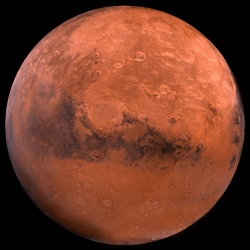
Scientists of the University of Arizona’s Lunar and Planetary Laboratory have taken to kites that they fly above lava flows blanketing the Hawaiian landscape to unravel the past mysteries that shaped Mars. A kite, equipped with off-the-shelf instruments such as a camera, a GPS, and orientation sensors, scans the terrain from high above.
The team then employs parallel computing and powerful software algorithms to assemble tens of thousands of images into extremely detailed and accurate 3D digital terrain models.
In terms of studying volcanic landscapes, the project is unprecedented in its scope and in the quality of the data it produces, with a spatial resolution of approximately half an inch per pixel, according to the researchers. They will present their results and methodology at the 46th Lunar and Planetary Science Conference, which is held March 16-20 in The Woodlands, Texas.
The insights gained from these terrain models are used to inform interpretations of images of the surface of Mars, taken with the HiRISE camera aboard NASA’s Mars Reconnaissance Orbiter, which has been examining Mars with six instruments since 2006. Led by the UA, HiRISE stands for the High Resolution Imaging Science Experiment and has revealed never-before seen details of the Martian surface.
"The idea is to understand places we can’t go by analyzing places we can go," said Christopher Hamilton, the principal investigator of the research team, who joined LPL in 2014 to establish a terrestrial analog research group. Hamilton studies volcanic surfaces on Mars to understand the thermal history of the red planet, in other words, how the planet’s internal processes manifest on the surface.
"We can use geologically young and vegetation-free surface features here on Earth, such as Hawaiian lava flows, as terrestrial analogs that can provide us with insights into processes that shape other planets," he added. "Instead of just saying, ‘this feature looks like X,’ we try to develop diagnostics that help us recognize the actual processes that led to the formation of a certain feature."
